AMG onslaught: Old guard roar and new-age phwoar
/Mercedes’ performance arm has made clear its eight-cylinder engine is on its final lap, with the future now reliant on an electric-assisted version of the four-pot that serves its smallest racers so well. How’s that going to work out?
Mercedes-AMG GLE 63 S - call it goliath!
AMG-Mercedes GLC 63 S - a slightly smaller serving, better-suited to NZ tastes?
Mercedes-AMG CLA 45 S - a more upmarket alternate to the A45 hyper hatch
Mercedes-AMG GLE 63 S
Price: $236,000 ($241,000 as tested).
Powertrain and economy: 4.0-litre twin turbo petrol eight-cylinder with 450kW/850Nm, 11.5L/100km, nine-speed automatic transmission, AWD.
Vital statistics: 4961mm long, 2018mm wide, 1720mm high, 2350mm wheelbase, luggage capacity 655 litres, 22-inch alloy wheels.
We like: Roaring engine, impressive dynamics, technology.
We don't like: Overwhelmingly dominating presence, huge thirst.
Mercedes-AMG CLA 45 S
Price: $138,300 ($129,090 as tested).
Powertrain and economy: 2.0-litre turbo petrol four-cylinder with 310kW/500Nm, 8.9L/100km, nine-speed automatic transmission, AWD.
Vital statistics: 4695mm long, 1834mm wide, 1404mm high, 2729mm wheelbase, luggage capacity 460 litres, 19-inch alloy wheels.
We like: Fantastic engine, nimble handling, chic look.
We don't like: Cramped cabin, hatch has more presence.
Mercedes-AMG GLC 63 S
Price: $184,900.
Powertrain and economy: 4.0-litre twin turbo petrol eight-cylinder with 375kW/700Nm, 10.7L/100km, nine-speed automatic transmission, AWD.
Vital statistics: 4682mm long, 1931mm wide, 1625mm high, 2873mm wheelbase, luggage capacity 550 litres, 22-inch alloy wheels.
We like: Roaring engine, impressive dynamics, technology.
We don't like: Overwhelmingly dominating presence, thirst.
WHAT kind of world is it where a 2.0-litre four-cylinder engine can end the reign of a V8 hugely respected for delivering beastly, brutal performance?
A cruel world, perhaps, but also the real world … which is taking us to a destination we cannot avoid, a place of change.
We’re pretty sure what’s going to happen. And we fully understand why it has to happen. We just don’t know quite when it’s going to happen, though most bets are on 2022 being the year, as that’s when the new C63 AMG reveals.
And where that car goes with its pathfinder new drivetrain, others will follow … including the AMG GLE S Coupe and GLC wagon tested here. Because they also run the famous 4.0-litre twin turbo V8 that has to be retired if Mercedes Benz’s famous performance badge is to survive.
When the V8 dies, another great AMG engine will rise: The 2.0-litre four-cylinder mill that has already made a name for itself in the make’s compact cars, including the CLA 45 S sedan also on test today. But in a different form than we know it at the moment.
As amazingly potent as it is in current form, it needs even more muscle to sit comfortably in the heavyweight SUVs here. Three hundred kiloWatts and 500Nm now will elevate, once in marriage to a mild hybrid system and an integrated 48V motor, to more than 372kW.
That compares well with the V8 as it features in the GLC 63 S on test – where you’re playing with 375kW - less so in the version that goes into the GLE 63 S; in that bigger car, the heat is turned up to a seriously searing 450kW. Electric-assist powerplants bust out big on torque – and the new one needs to be super muscular, because here the V8 peaks are respectively 700Nm and 850Nm.
So what’s coming isn’t exactly an easy ride.It’ll still be super fast, but certainly become more efficient, but probably will have different feel and certainly is unlikely to sound anything like the same.
But, frankly, if you can think of another way to meet those European Union fleet CO2 emissions targets and avoid so avoid eye-wateringly huge fines, then AMG would like to hear about it. They cannot. Meantime, if you want to enjoy that old-school oomph behind an AMG badge, then best not dilly dally. As much as the V8 is still here for a good time, it potentially is not going to be around for a very long time.
Agreed, the day of that final farewell will be tough. That old saw about the easiest way of improving a car being to slap a brawn-laden beast-engine into it? It still holds true.
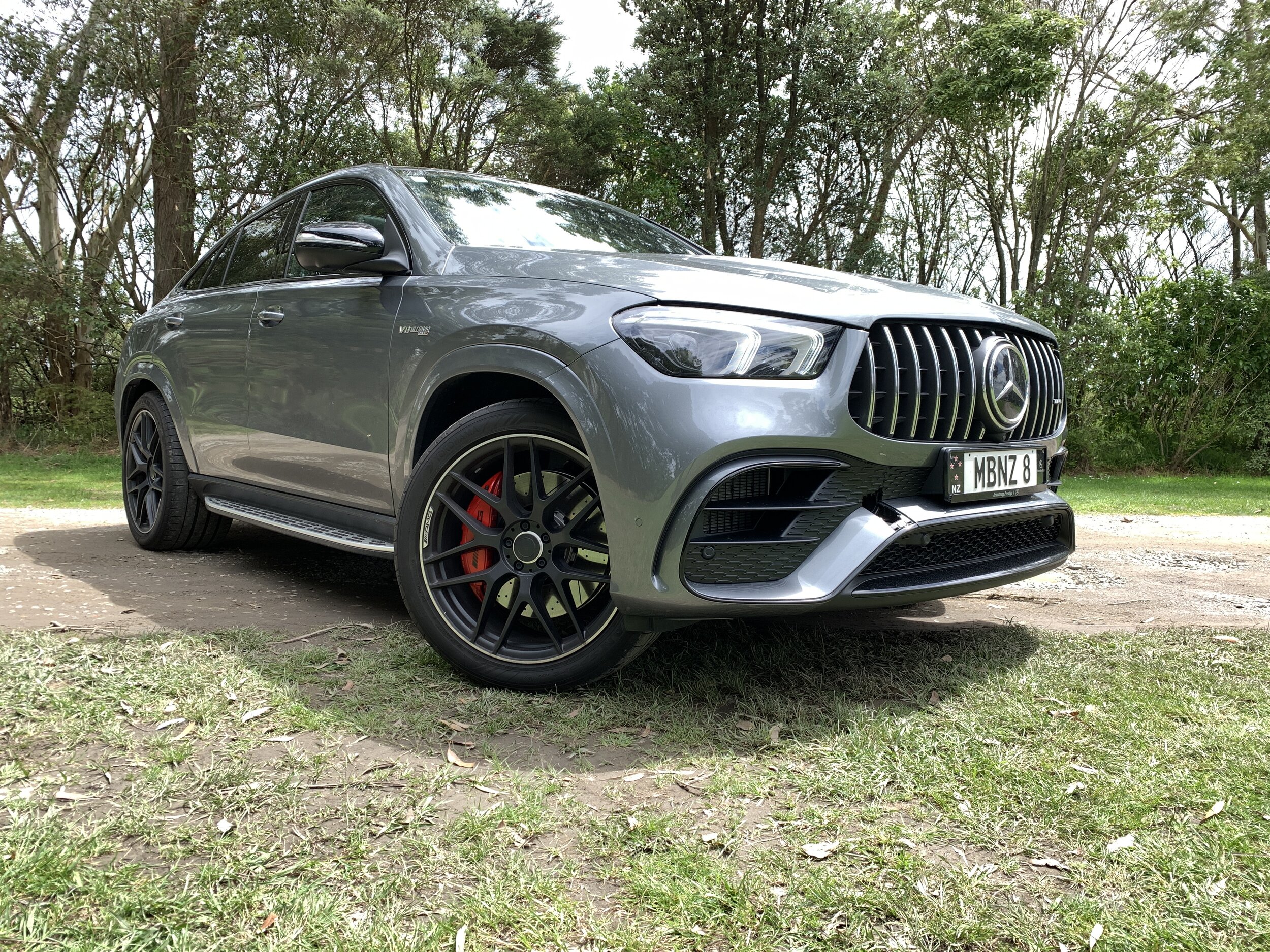
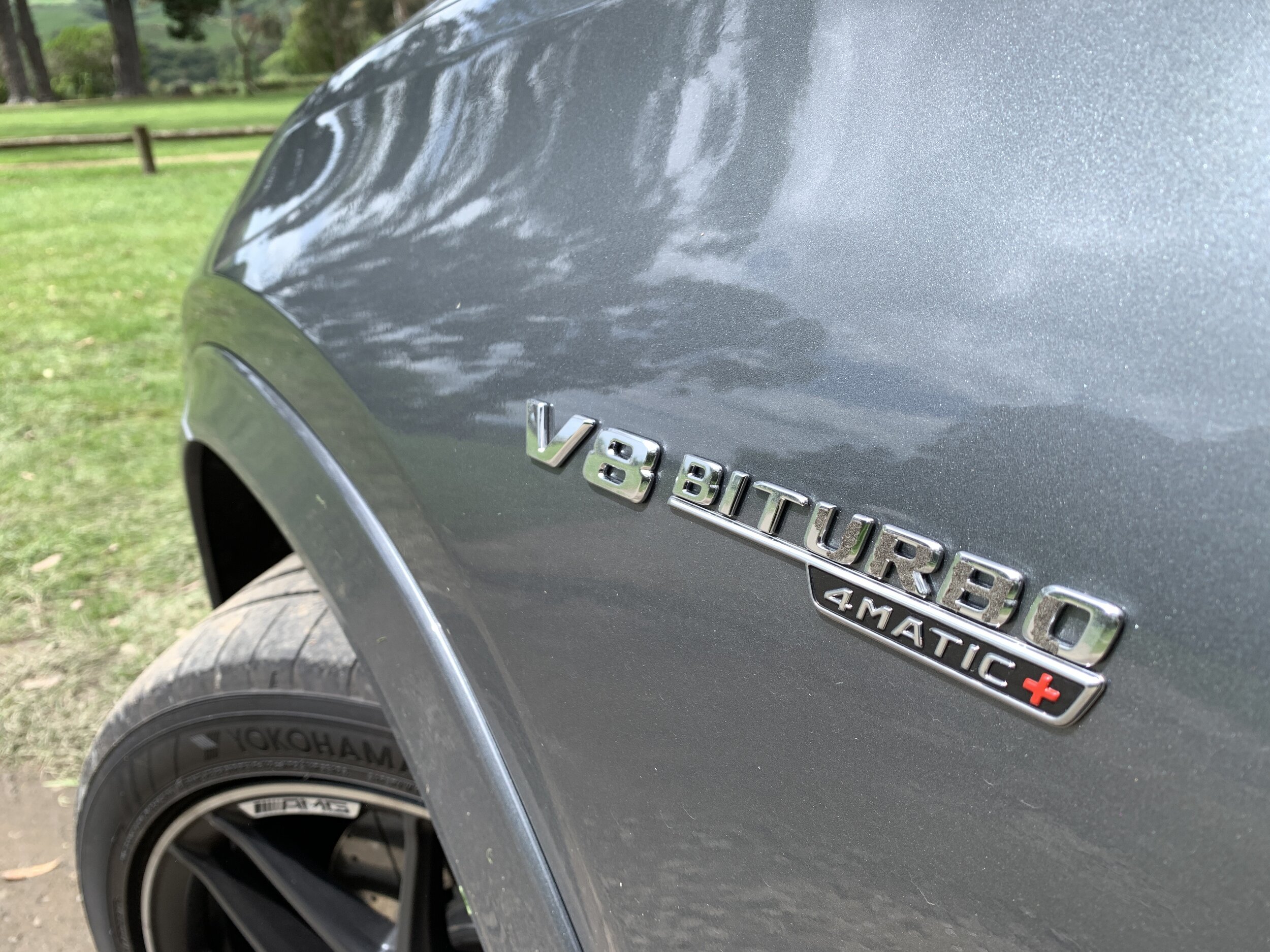
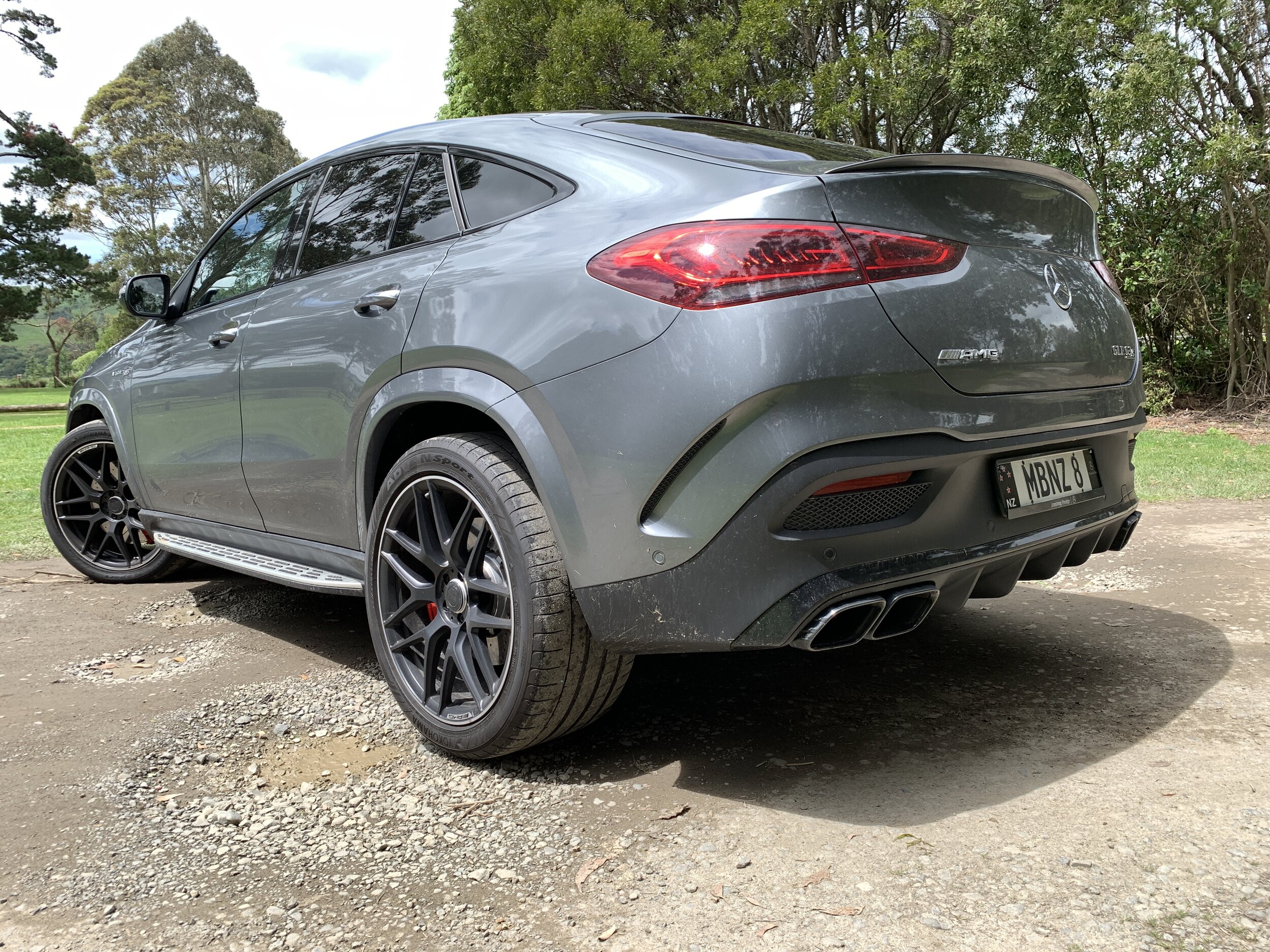

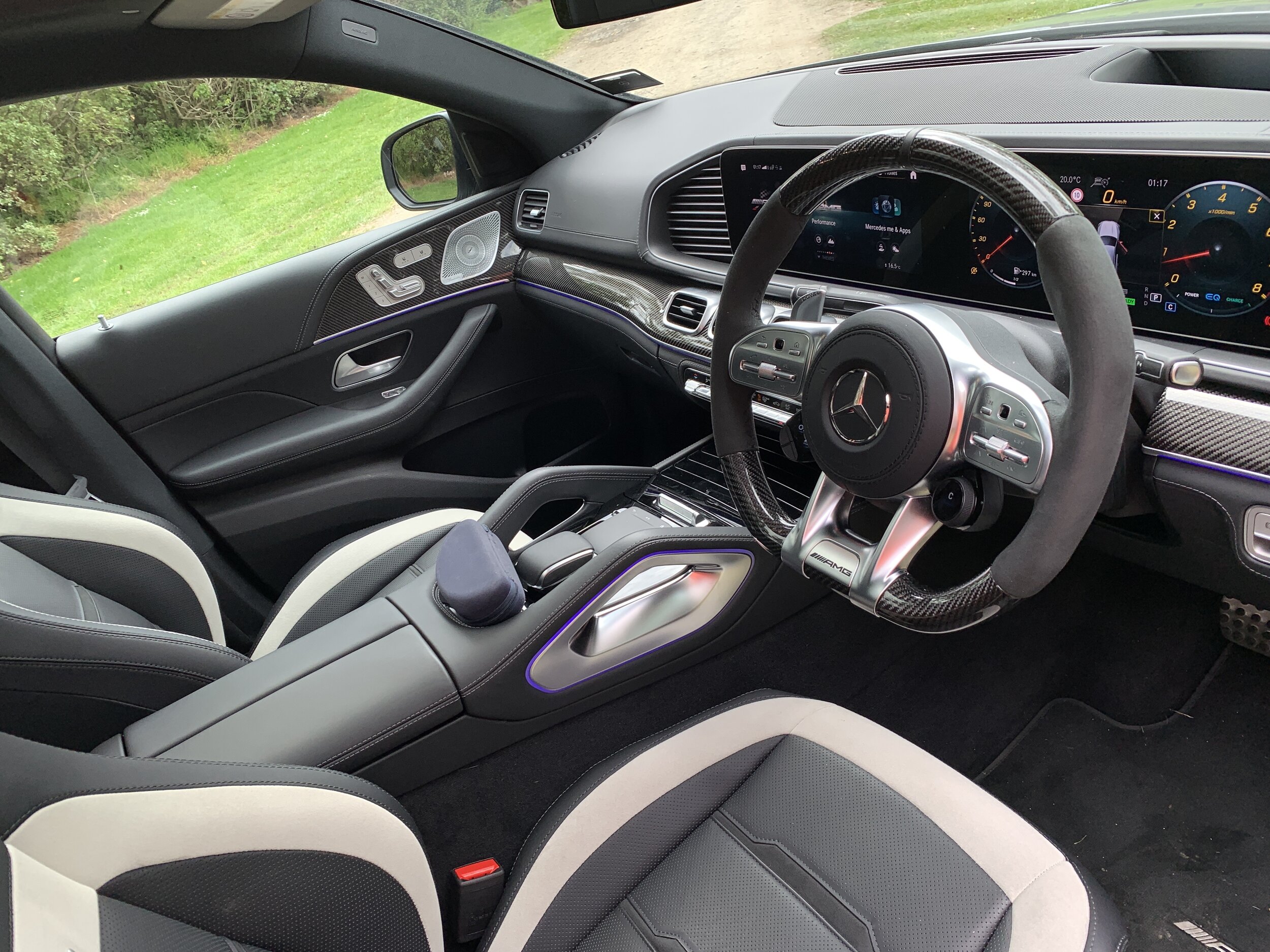
Starting at the top with the GLE, let’s say this: If you are chasing an expensive eight-cylinder experience in its most primal, ‘glam-bogan’ setting then the Coupe in full-fat AMG fitout is pretty hard to beat. It’s loud in every way. Even when not running, it’s a big enough noise to have the neighbourhood on edge.
Nigh on quarter of a million bucks buys a lot of real estate; I’m not a total fan of this kind of design, but if you have to have to buy into a slope-backed SUV, it’s probably the best-looking of this peculiar breed, with an elegance about the rear-end treatment. While it's an imposingly muscular vehicle, it's not offensively gargantuan. The AMG elements of an airdam, colossal 22-inch alloys and trademark quad pipes at the back suit and some of the design detailing in stupendously good.
The interior is better still. Mercedes' MBUX infotainment screens are awesome for clarity and content and everything else is shot through with reassuringly high-class quality, the part-Alcantara, paddle shift-shod steering wheel being a particularly tactile delight. It's almost needless to say that the Coupe sacrifices both rear seat space and boot usability to its more prosaic wagon sibling, but the rear seating is roomy enough for tall adults.
The packaging is really a secondary appeal; what you’re buying into here is powerhaus performance and, wow, does it deliver. To elicit such astonishing performance data as 0-100kmh in 3.8 seconds and a top speed of 250kmh, with more in store if you have the software to unleash it, from something that tips the scales at around 2.5 tonnes, you need power. Lots of it. Luckily, Affalterbach seems to have unlimited resources of the stuff.
The other AMG cars here patently have potency, yet here the urge is something else still, bordering on downright astonishing. It piles on speed with utter disdain for any air stupid enough to get in its way.
And wow … the sound! AMG is one of the finest purveyors of V8 soundtracks and the biturbo at this level is no exception to this rule. It's fabulously deep-throated and resounding, with the requisite burbles and pops of the exhaust on overrun or when shifting gear.
What to do with this? AMG obviously has a game plan, but can you see yourself agreeing to play? I’ve seen AMGS at track days before, but they’ve generally been V8 sedans and coupes, plus the occasional A45. But always the hatch, not the sedan format seen here. And never a SUV.
And, yet, all three cars here definitely have the brakes, the suspension and the drive mode calibrations to enable a red hot go at fast lapping. Even so, as wickedly fast and racy as the GLC and A45 are, in this company they are both humbled by the GLE Coupe. It’s a total beast, thanks to elements that go way further than the usual ‘could if I wanted to’ nod of a fat Alcantara-trimmed wheel and quasi race seats up front, plus in this instance a carbon fibre trim kit.
Here the suspension and drive modes span beyond the usual Comfort-to-Sport Plus provisions to include an outright Race setting that either relaxes or completely disengages some driver assists and turns the throttle, and gear change points, up to 11. It runs Yokohama Advan Sport tyres, a good choice for occasional circuit work.
The MMI menu includes a Track Pace page, you can select from racetracks around the world, and the screen will help you drive it better, showing not only delta times and absolute times but also instructional guides to best cornering points and “breaking points”. If any word had to mis-spelled, right. No New Zealand circuits are on the menu, but you can ‘import’ a layout simply by driving on it, then the application will map the track out. If you don’t want to risk the car in cornering, there’s a Drag Race function with its own set of bespoke telemetry and timing.
It’s so utterly Nurburgring-nutsy that you half expect to find a set of full logoed racing kit in the boot (it’s not, I checked). The challenge it lays down at every start up is so patent you just know the memory of seeing this goliath steaming hard around a track would be very special indeed. And yet, you know it would just be a fantasy; the probability of any owner meeting AMG’s expectation is simply so remote as to be negligible.
It’s not impossible to keep this explosive force contained in everyday driving, of course; but reality is that no more than a fraction of it immense oomph is being utilised in that situation and unleashing the rest, should you settle on any of the performance settings, is unnervingly easy. The awesomeness of the initial step-off is one thing, but what’s every bit as impressive is the tidal wave of thrust awaiting to unleash when you’re on the move; overtaking is ridiculously easy – the trick is learning to temper how it is accomplished; anything more than half throttle and it shoots forward at an incredible pace of acceleration.
The slightest lapse in judgement and … well, all you can hope for is a brilliant lawyer and a lenient judge. This is the sort of car in which just thinking about going fast can be risky; there’s nothing here to suggest the claimed 0-100kmh time of 3.8 seconds is a hard call or that there are any numbers on the speedometer that it cannot achieve. This is very much the big time.
There’s no getting around the fact that it can feel that way, though shorter than the GLE wagon, the Coupe is still 39mm longer and 7mm wider than the previous model and sits in the large car category; particularly in respect to width, which is noticeably accentuated in AMG format. That makes it quite a hulking sight on secondary roads, where it less fills a lane than subjugates it.
Even so, it’s far from big-footed or clumsy; apart from having massive traction and grip and extremely decent brakes, it also very much benefits from having an active ride control that incorporates 48-volt active roll-stabiliser bars that, through offering continuously variable adjustable damping, result in deft handling and deliciously direct steering feel and accuracy that just don’t normally experience in this category. Ride comfort is also decent, even in the hard-out modes, though you do tend to dip into those at your peril; the car’s aggressiveness becomes all the more pronounced as soon as you switch away from a Comfort setting.

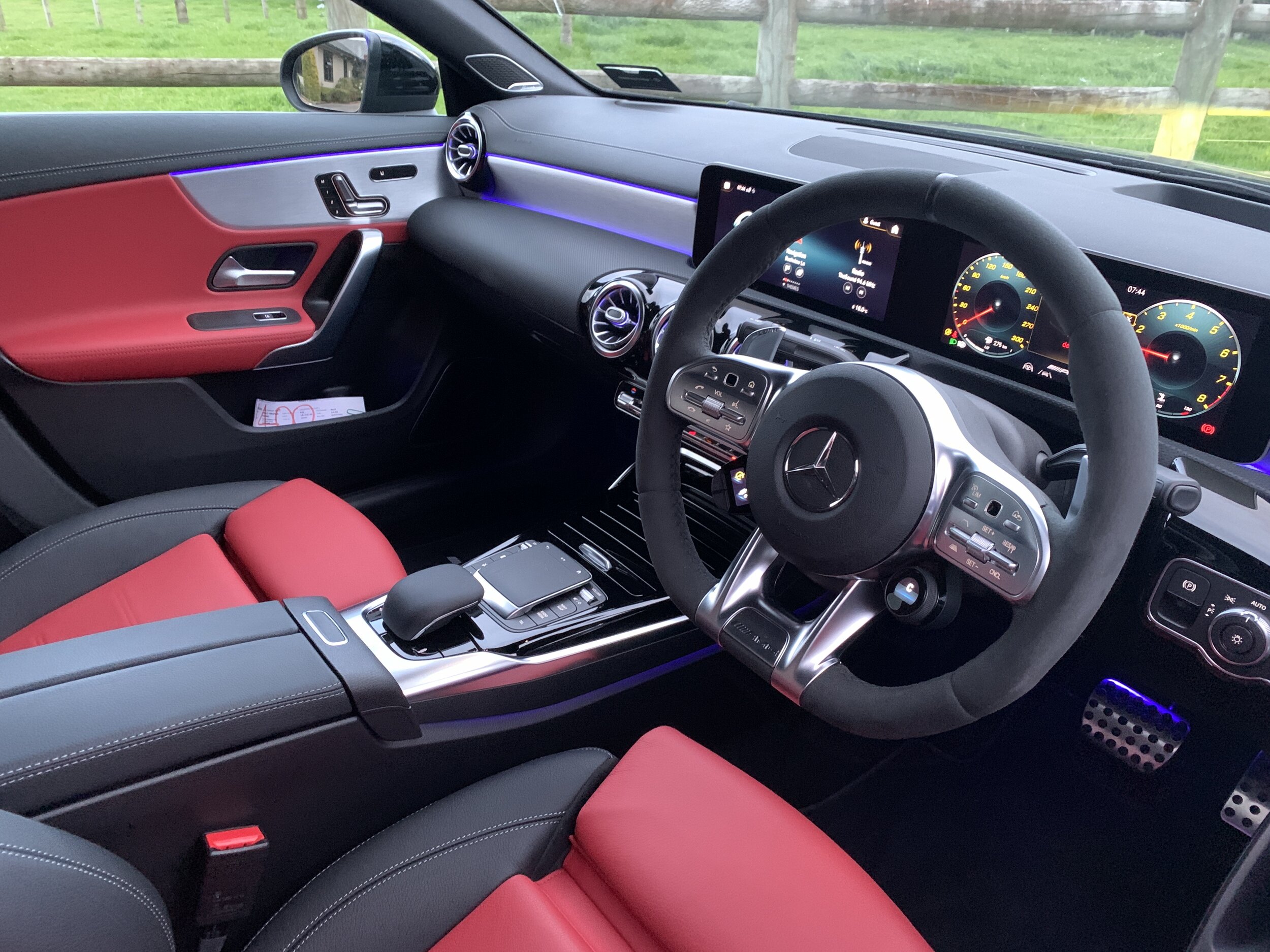
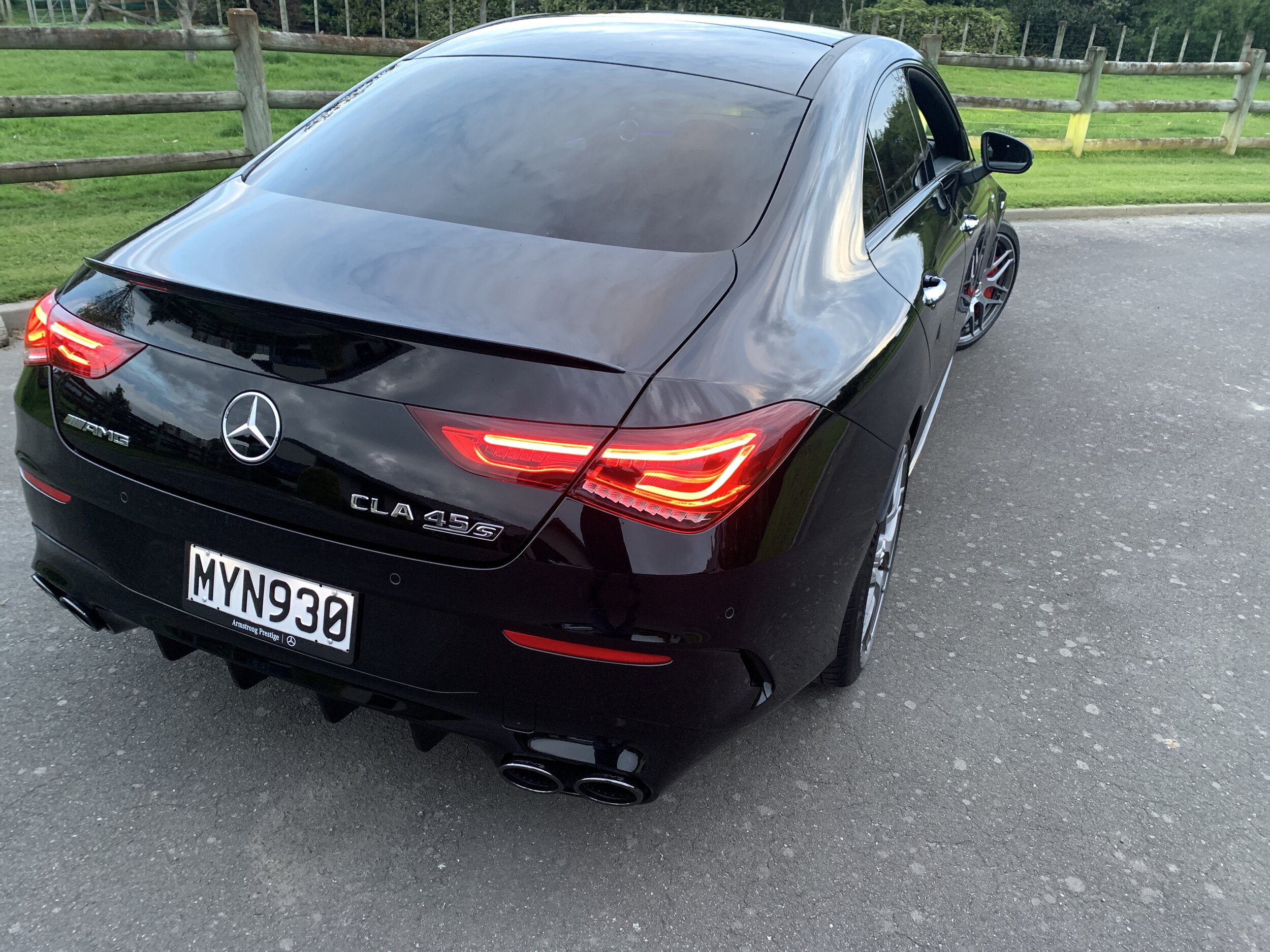
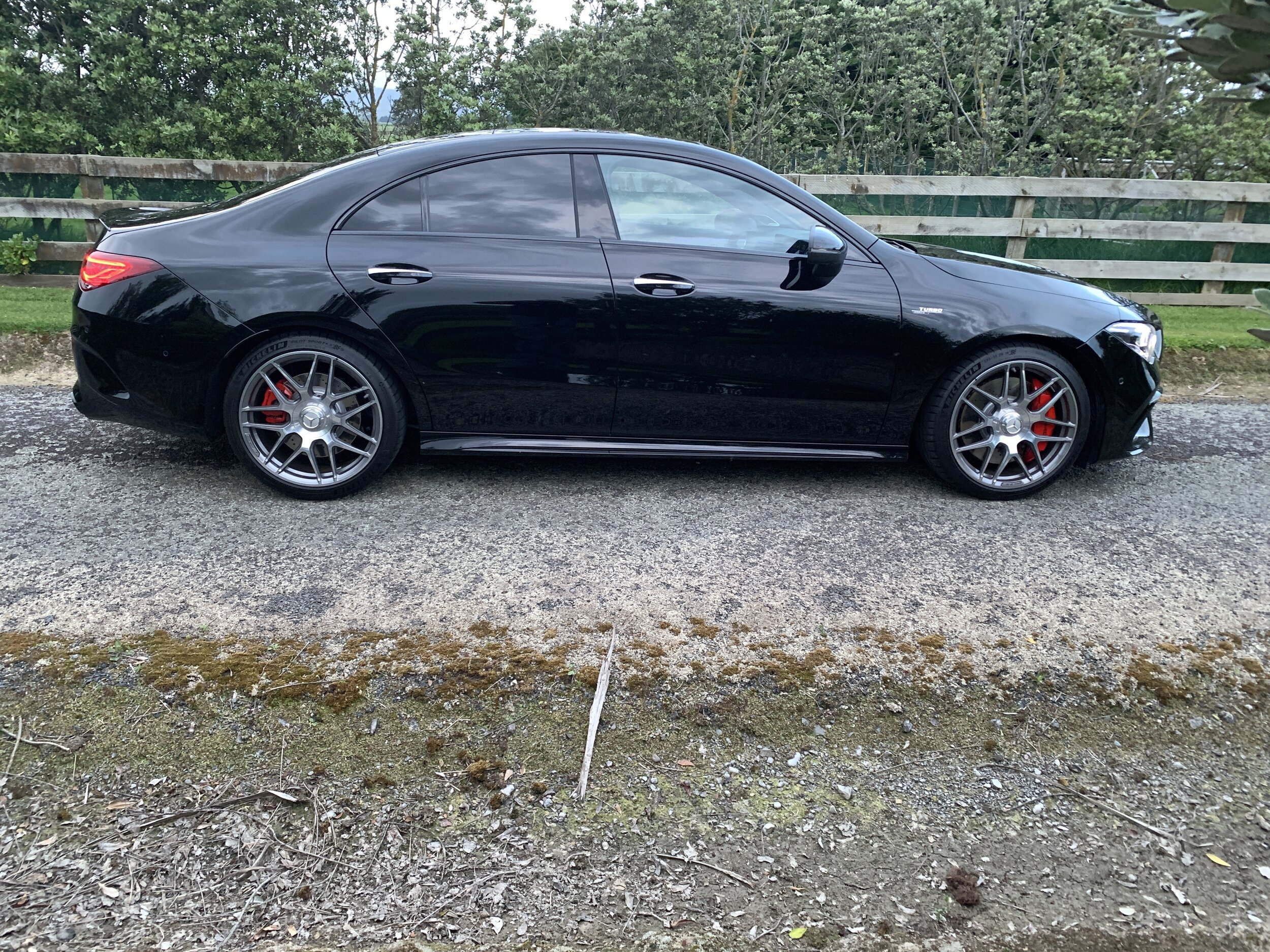
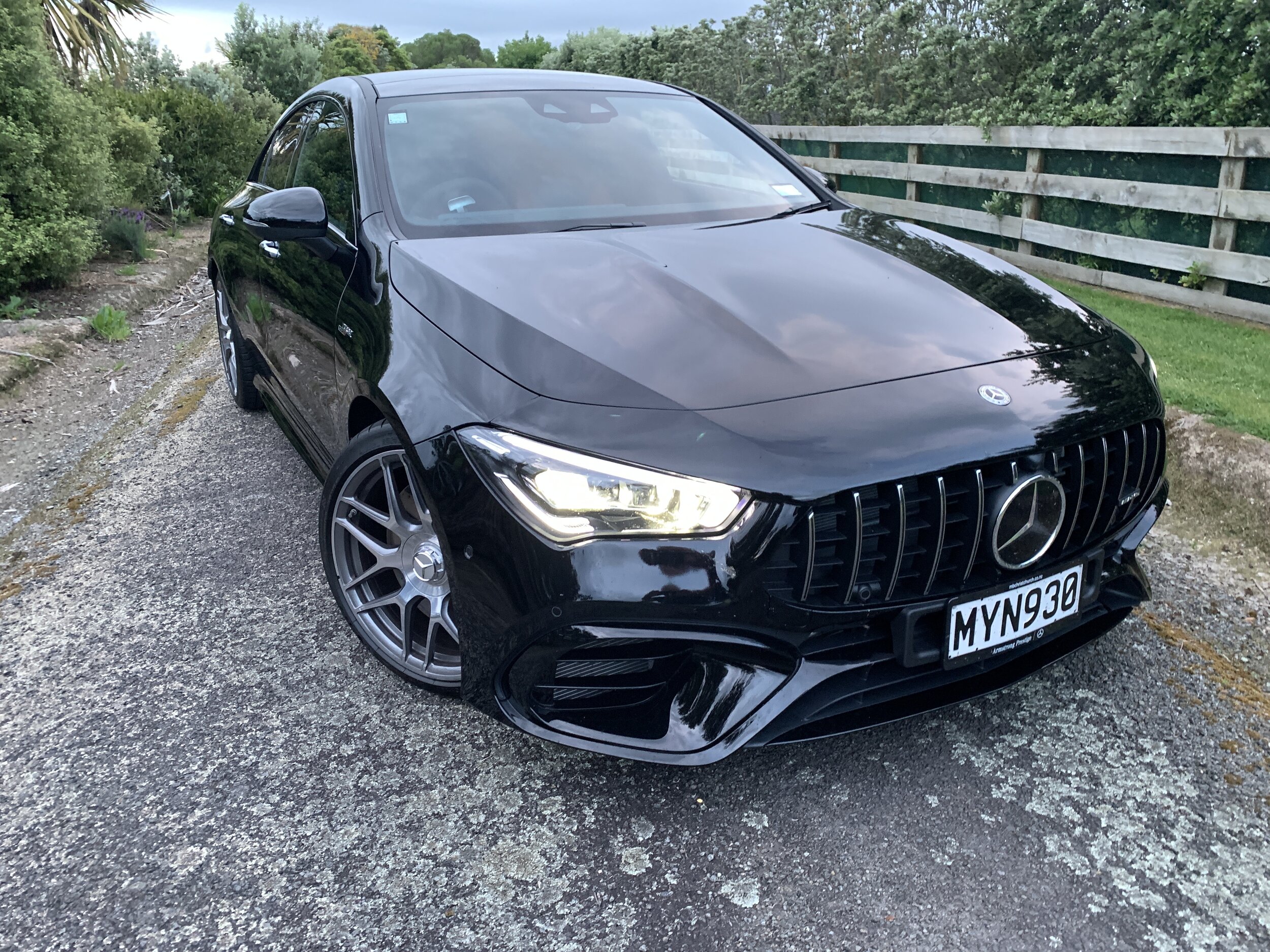
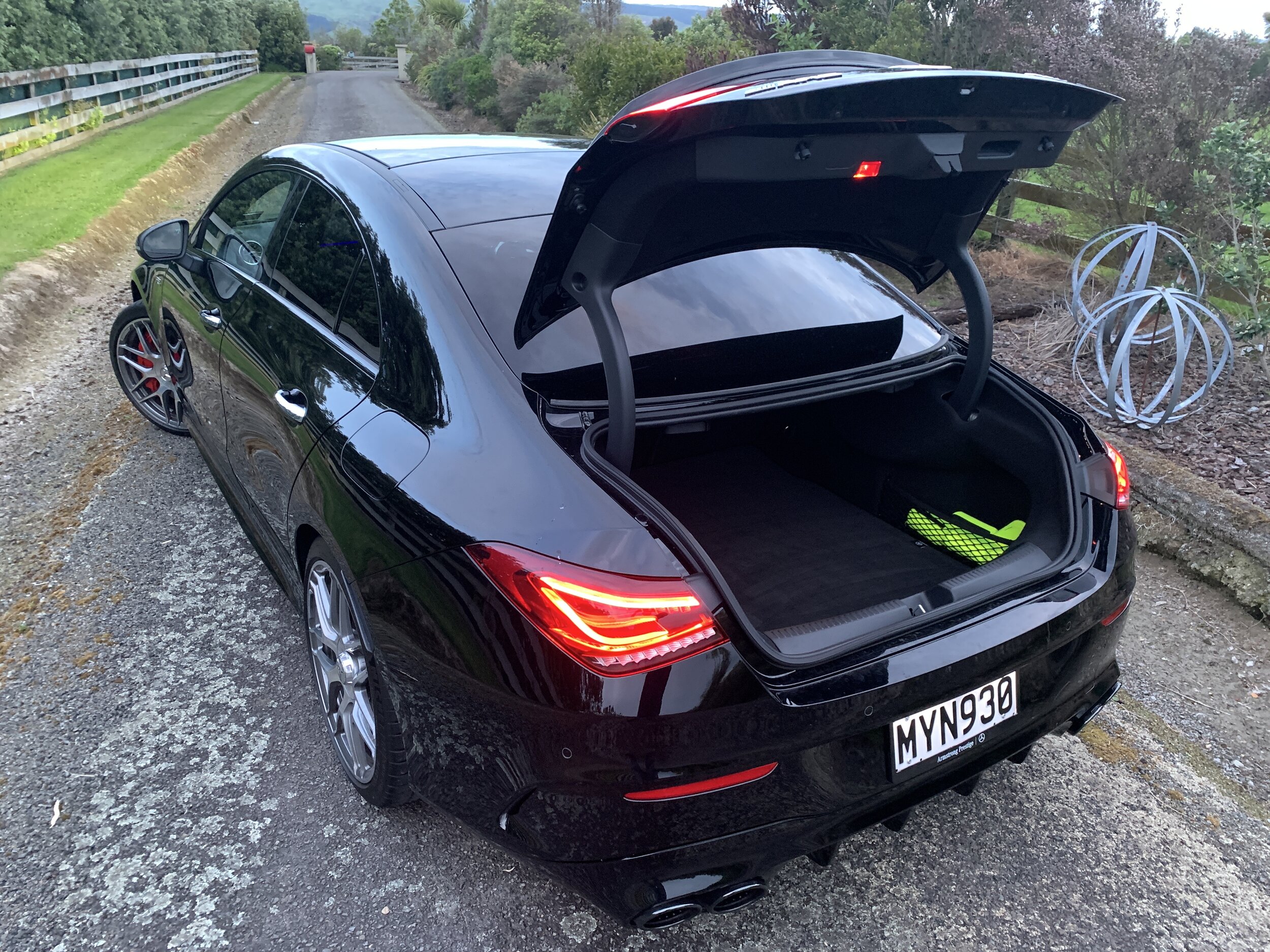
Having the CLA 45 S and GLC 63 S as bookends to the GLE was an interesting exercise; neither are much slower and the CLA, having been dressed up with some interesting touches including chromium-finish alloys and delivering in an arresting red body colour (with a black Lugano interior), was really not much less extrovert in its kerbside appearance, yet they were undoubtedly easier vehicles to keep in check.
The sedan positions as an interesting alternate to the A45 hatch; it has all the same attributes – all-wheel-drive, stonking engine, firm ride, nippy handling – and wins attention for having the appearance of a slightly-scaled down C-Class, albeit with more daring styling touches which remind that it’s genetic heritage is equally as relevant to the CLS.
Establishing what it offers and why is an intrigue. You wouldn’t buy it as a C-Class alternate because the cabin is so much smaller; it’s a real challenge for adults insofar as rear legroom is concerns and that swoopy roofline really cuts into headroom compared to an A45. You might not buy it as a booted alternate to the A45 simply because the hatch is cheaper and also because the compact performance sedan market is … well, often overlooked.
For all that, the car is far from undercooked. As much as an increase in track width and upsize in wheel dimension immediately sets it apart from the regular CLA, the extent of modification goes way further; with totally enhanced suspension, bigger brakes and so on. Dive planes on the front bumpers and a spoiler at the rear also give the car an aggressive look.
The cabin is all but identical to that of the A-Class range and the AMG version gets the best of equipment. That means the full-width dual-screen setup for the instrument display, which looks excellent with vibrant colours and sharp resolution. You get a choice of control for the infotainment system, through the touch-sensitive tabs on the multifunction steering wheel or the large trackpad on the centre console.
This 2.0-litre has the highest output ever generated for its capacity, so is patently a real firecracker, yet it’s not just the outright kapow that earns credit. As much as it might seem a cop-out, then engine’s civilised demeanour comes across as a bonus for daily driving; it can be smooth and even quiet if circumstances demand. You do have an active exhaust at hand, so more noise is easily achieved.
Of course, step up the pace and the car becomes very feral; it’s really fun on tight winding roads, the all-wheel-drive lends huge confidence without sanitising the driving experience. The prodigious mid-corner grip is a standout feature and powering out of slow hairpins it has ability to surge forward at an incredible rate.
With the sportier drive modes activated, it can feel more rear-biased, to the point where you can instigate dramatic rear-wheel-drift action with the Race mode, where the full talent of a trick rear axle, using an electro-mechanically controlled multidisc clutch on each half shaft to vary the power delivery from left to right, comes to the fore.
Driving the CLA reminds how good the 'M139' engine is. Sure, you can understand why it is going to achieve electrical assistance for the job ahead, but in current state it is more than enough not only for a car of this size but those immediately above it.

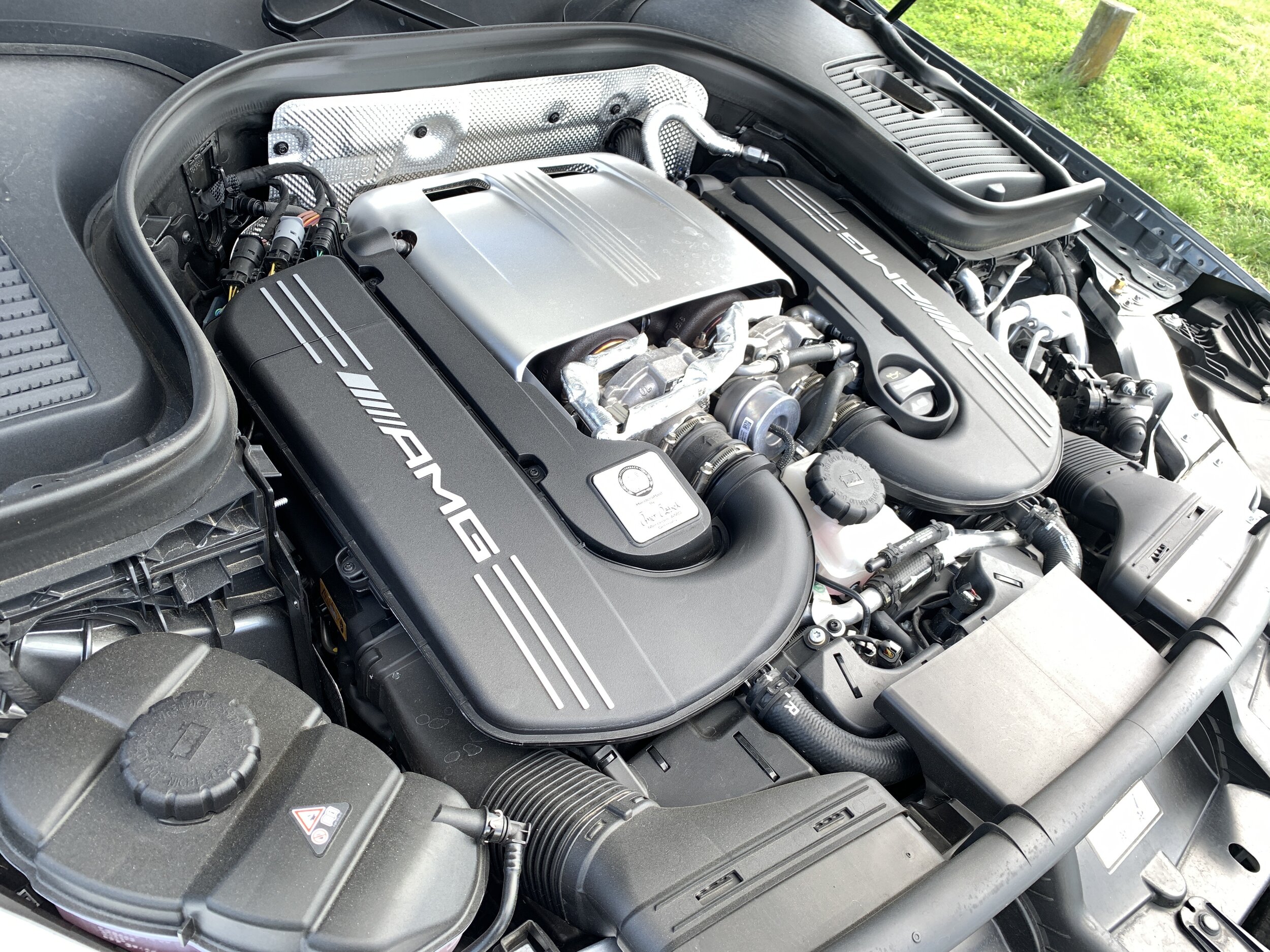
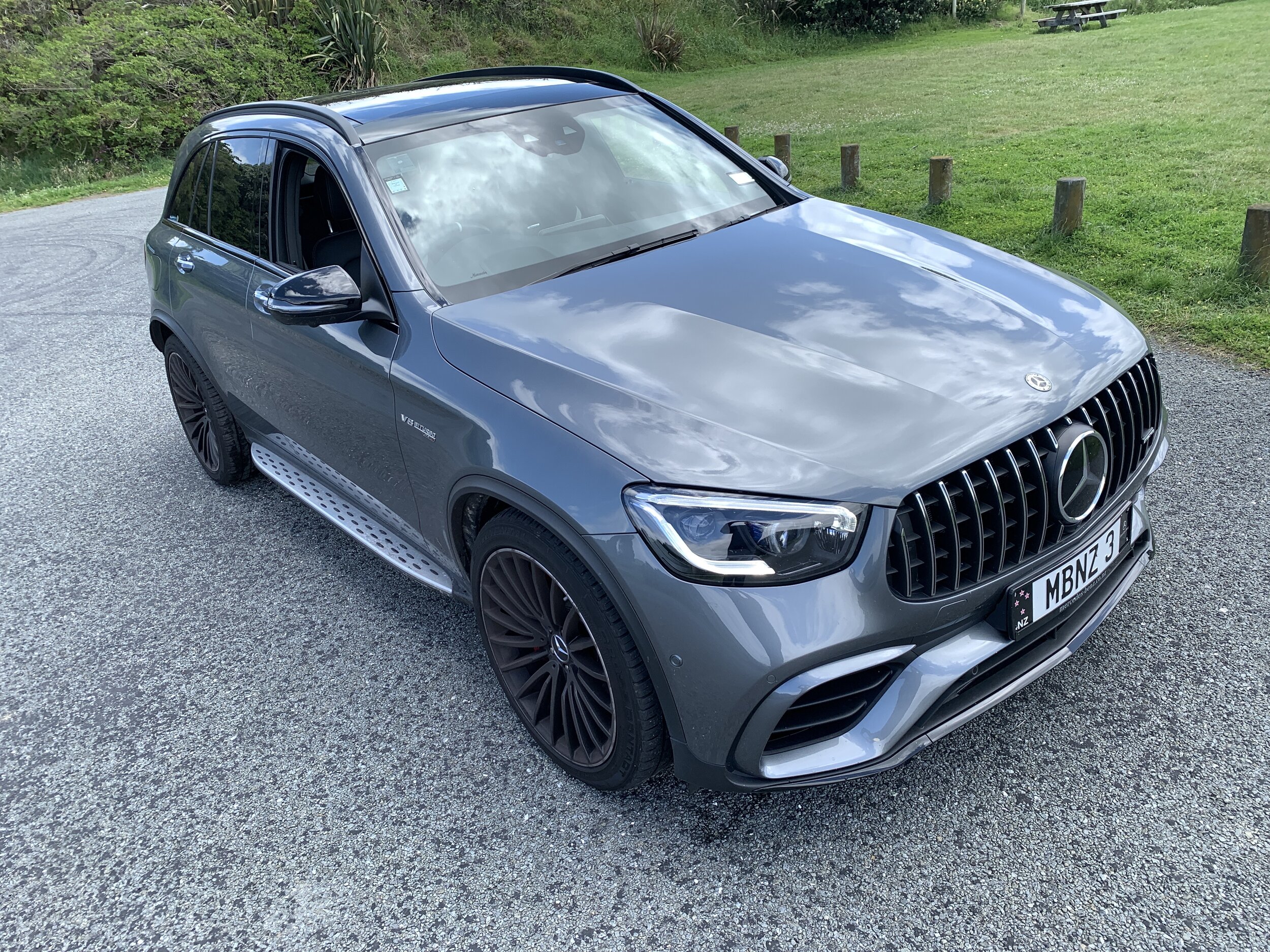
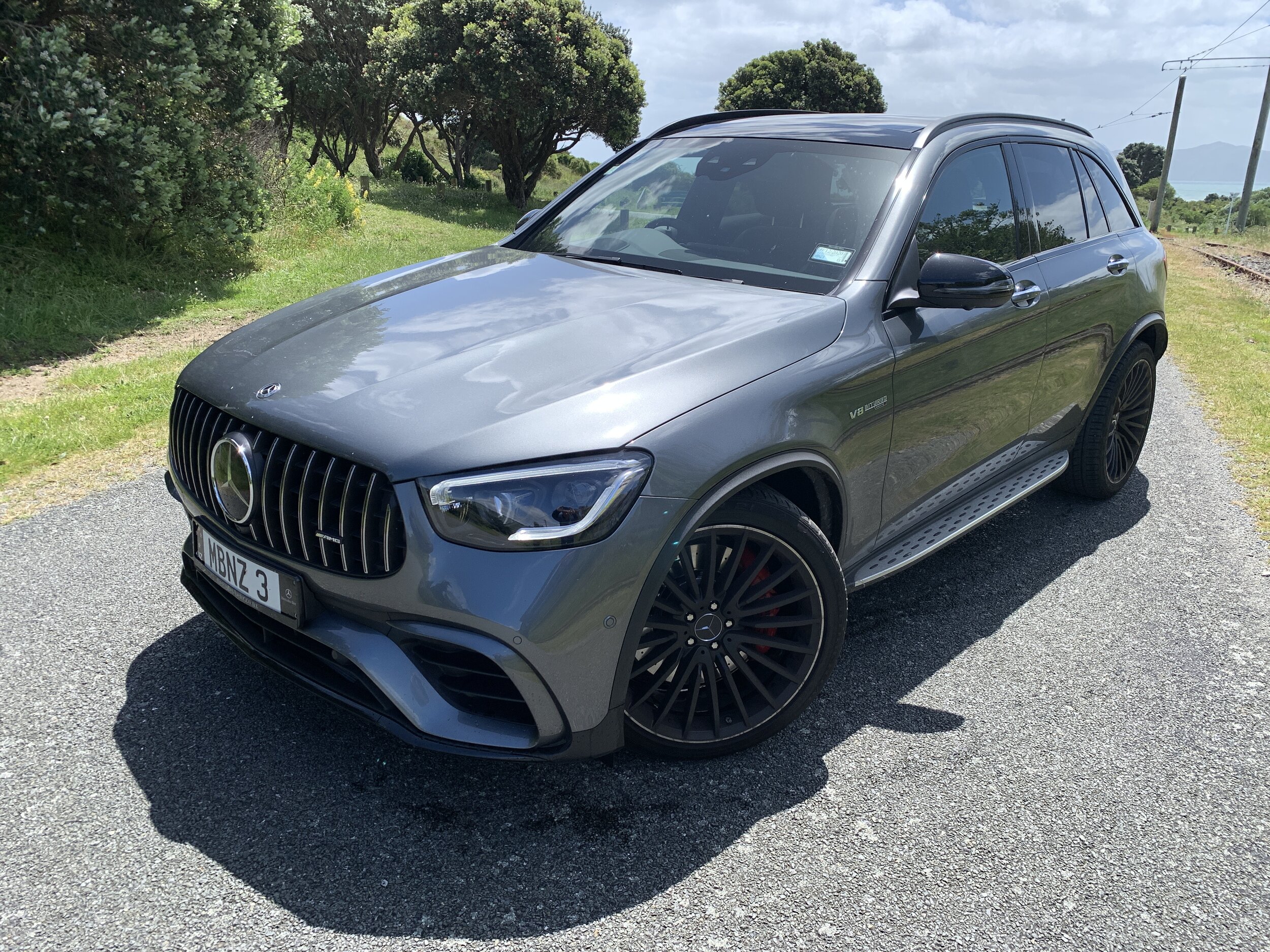
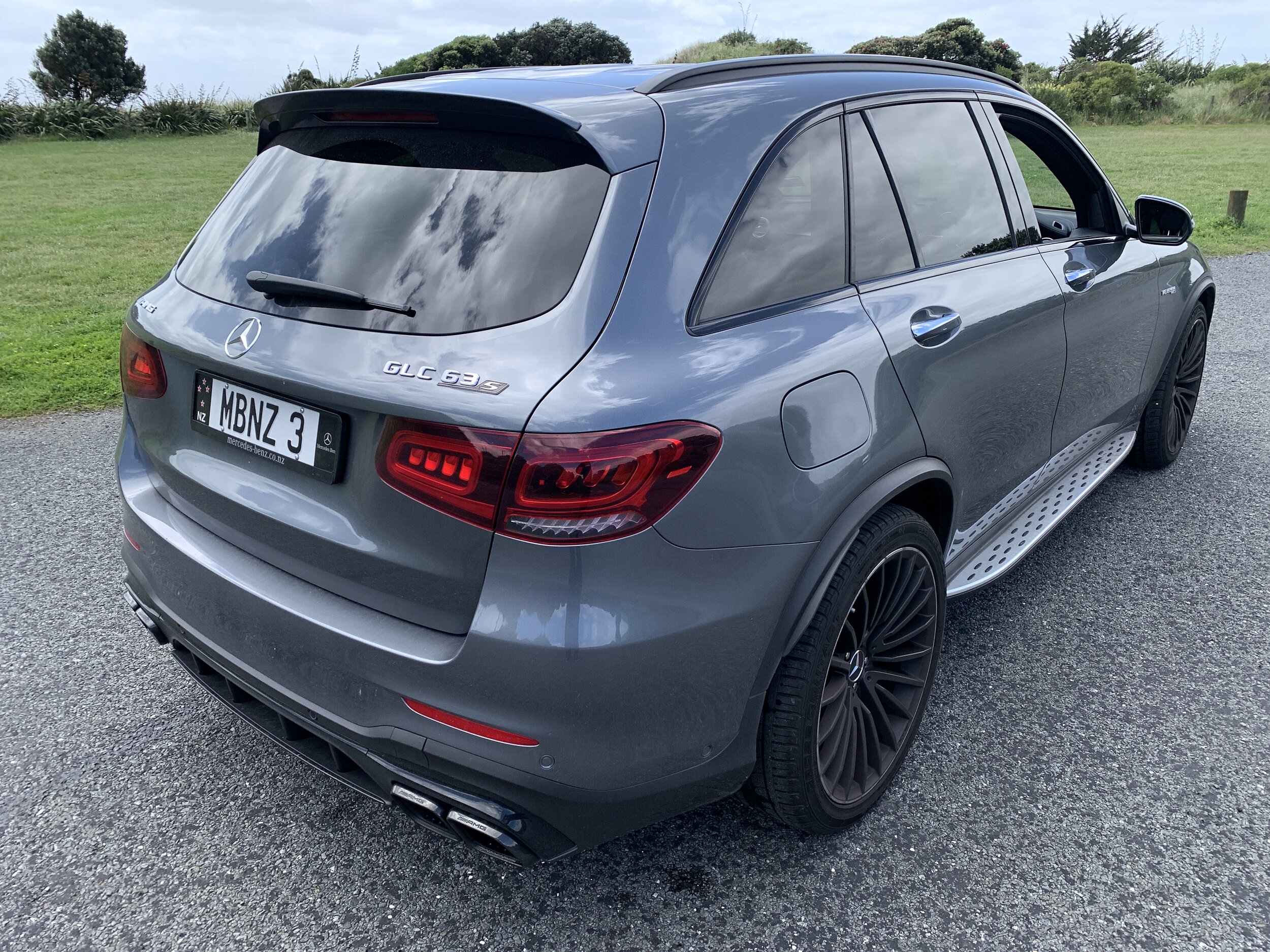
That thought carried into the time with the GLC. It’s great with the V8 yet I cannot imagine it would be poorly served by taking the four-cylinder in the future, even just as it is now.
The AMG is the latest of the current form GLCs to undergo a mid-life facelift that will likely carry it through to the point where the V8 retires and the new powertrain comes in. It’s certainly a car that deserves a good future, not least because it feels just so right-sized and conceived for our motoring condition.
Being by far the most invigorating GLC carries obvious cachet, yet what also keeps this model looking good is that it potentially is one of easier AMGs to settle on when family friendliness and strong value also become important considerations. With this car, you can mount a truly valid argument on grounds of versatility and practicality; neither of those strengths are diminished by the road rocket configuration.
Speaking of zoom, the 75kW/150Nm deficit over the GLE is less evident that might be imagined. Sure, it doesn’t sound or feel as fierce, but there’s still enough shove to warrant having that badge.
As per the GLE, it has a nine-speed auto, with its wet start-off clutch instead of the usual torque converter to ‘optimise response to accelerator pedal commands’. The engine mightn’t snarl as brutishly, but it’s epic enough when given the boot, the gear shifts are just as snappy and it also entertains enough rear-prioritised driving feel to handle more like a rear-driven wagon than a fat four-wheel-drive.
That electronically controlled diff lock does a great job but you cannot deny the positives from the newly-added AMG Dynamics electrical/software update that influences torque distribution, the locking diff and the stability control. In short, if were playing wing-man to the GLE, there’d be no great challenge keeping up, while for oncoming traffic the fact it’s so much smaller and less physically intimidating in look means it’d be a less frightening sight when met burling out of corners.
The transmission is well-attuned to the tasks that AMG expects but the 4MATIC is what will keep you out of trouble. In thanks to fully variable torque distribution, it also factors more for fun than feel. Certainly, you learn not to let its size, semi-highish ground clearance standing or substance fool you – this thing will slip and slide with the best.
The requisite mid-life visual changes inside and out are not huge; reworked LED headlamps, wider wheel arch claddings, redesigned LED tail lamps … that’s it for the external enhancements.
The interior revision centres on adoption of the MBUX infotainment system, but as in integration that builds on the old layout rather than the full-blown version seen in the other cars, and the console gaining a new touchpad controller. The instrument cluster has been digitised too, with a multitude of AMG-specific displays, including Supersport mode to give you the low-down on Gs generated, power made, turbo boost levels, drive mode set-up, you name it. There’s also a new menu to data log your race track experience. How GLE, right?
It also adopts the new AMG steering wheel and its dedicated buttons hanging off the spokes. Just like the regular GLC, the quality of the finish inside is excellent and though AMG Performance sports seats up front are bulkier than the standard items, they are no less comfortable.
The stupendous thrust and exclusivity of an AMG does little to erode the high degree of practicality this model line delivers. Eligibility to tow seems unlikely – that’s not a thing for AMGs – but it otherwise looks reasonably well sorted as a family wagon. I’d be removing the sidesteps, though.
OF the three models here, it’s the one that works best in the now. Of the two V8s, it’s the one that will adopt most easily to the new route ahead: It could be an epic journey.























